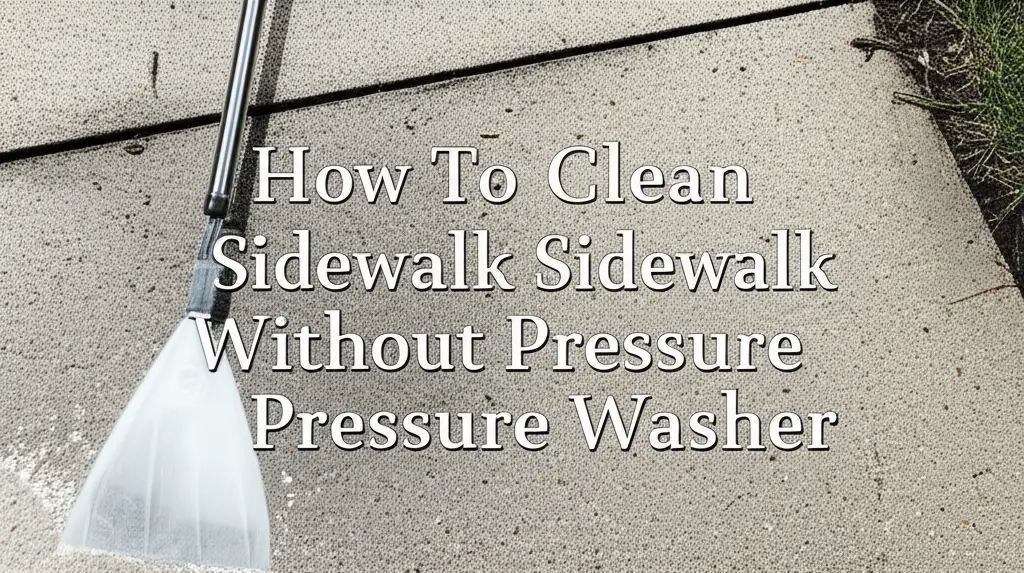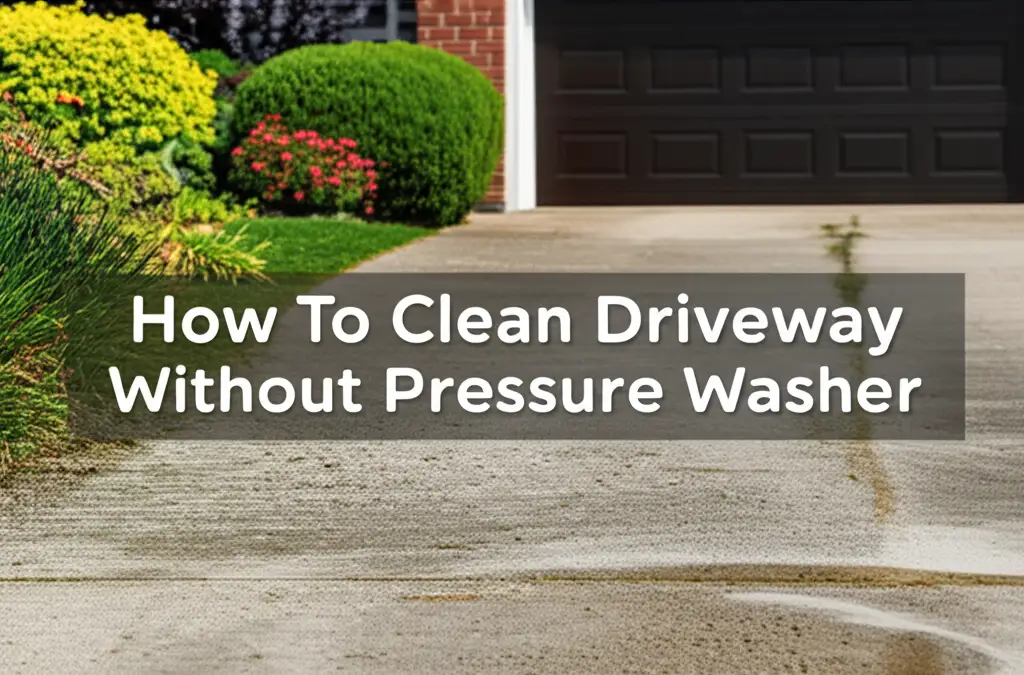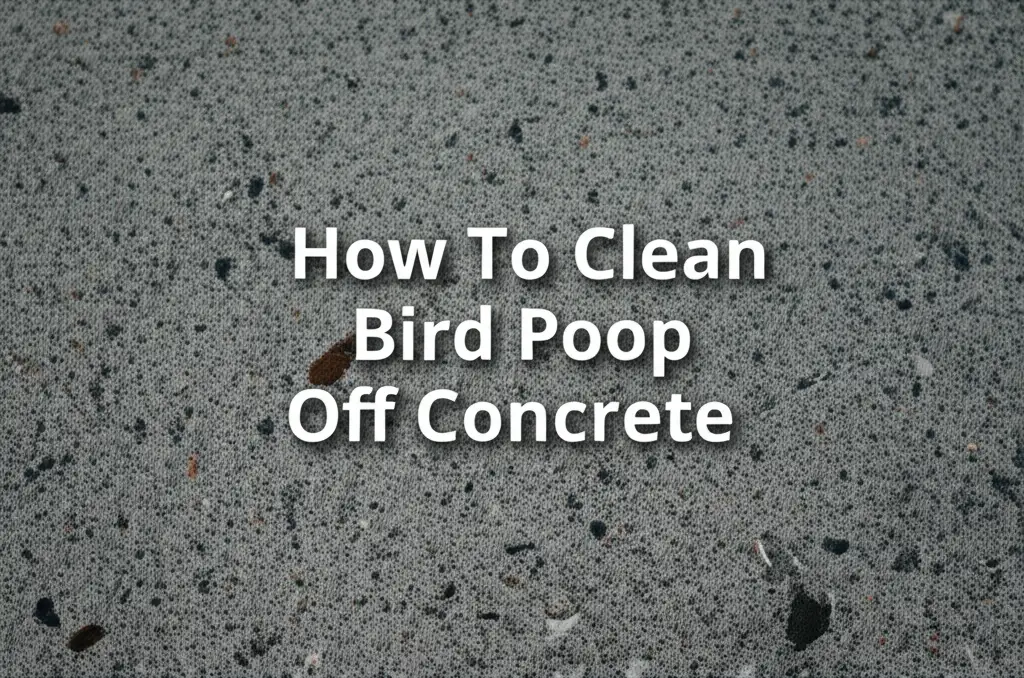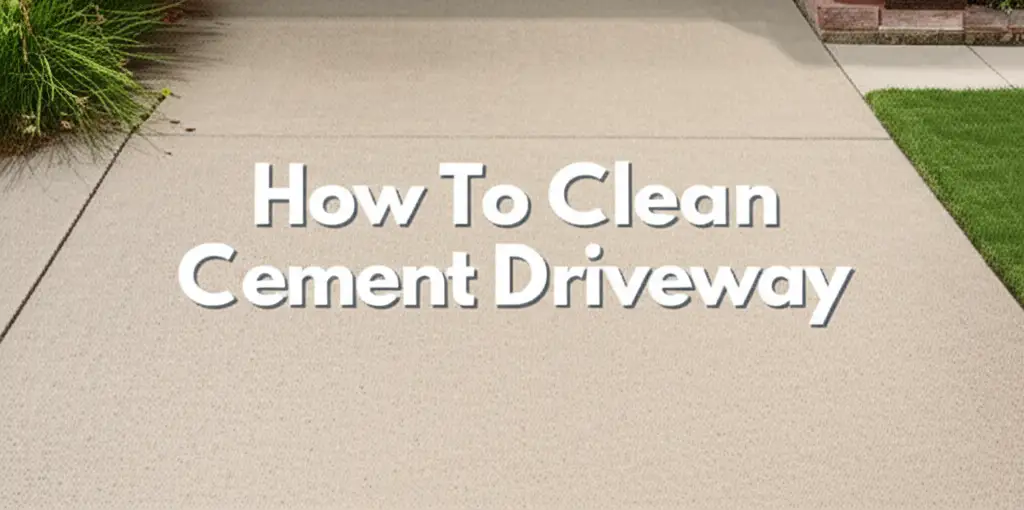· Outdoor Cleaning · 15 min read
How To Clean Sidewalk Without Pressure Washer

Effortless Sidewalk Cleaning Without a Pressure Washer
Is your sidewalk looking dull and dirty? Do you want to clean it but do not own a pressure washer? You are in the right place. Many people believe a high-powered machine is essential for a clean outdoor path. I am here to tell you that is not true.
You can achieve fantastic results with basic tools and simple cleaning solutions. This method is often safer for older concrete and kinder to your wallet. You avoid potential damage from high pressure. This article shares proven techniques to clean sidewalks effectively. We will cover basic steps, common stains, and eco-friendly options. Get ready to transform your walkway.
Takeaway
- Gather Tools: Collect a stiff brush, bucket, hose, and appropriate cleaning agents.
- Prepare Surface: Sweep loose debris before applying any solutions.
- Apply Solutions: Use natural cleaners like vinegar, baking soda, or dish soap for most stains.
- Scrub Thoroughly: Work cleaning solutions into the concrete with a stiff brush.
- Rinse Well: Flush away all dirt and cleaning residue with fresh water.
- Spot Treat: Address stubborn stains with targeted solutions and repeated efforts.
You can clean your sidewalk without a pressure washer using a stiff bristle brush, a hose, and common household cleaning agents like dish soap, white vinegar, or baking soda. First, sweep away loose debris. Then, apply your chosen solution, scrub stains thoroughly, and rinse completely with water.
Why Clean Sidewalks Without a Pressure Washer?
Cleaning your sidewalk without a pressure washer offers several advantages. First, it is often safer for the concrete surface. High-pressure water can erode the surface of older or weaker concrete. This leads to crumbling or pitting over time. Manual cleaning reduces this risk significantly. You control the force applied.
Second, it is a budget-friendly option. You do not need to buy or rent expensive equipment. Most of the tools you need are already in your home. This makes sidewalk cleaning accessible to everyone. You save money while keeping your outdoor areas neat.
Third, manual cleaning is quieter. Pressure washers create a lot of noise. This can disturb neighbors or simply make the task less pleasant. Using a brush and hose creates minimal noise. It allows for a more peaceful cleaning experience. Your neighbors will appreciate the quiet too.
Fourth, it uses less water in many cases. While rinsing still requires water, you avoid the continuous high flow of a pressure washer. This makes it a more eco-conscious choice. You conserve resources while still achieving a clean path. These reasons make manual cleaning a smart choice for many homeowners.
Essential Tools for Effective Sidewalk Cleaning
Before you begin cleaning your sidewalk, gather the right tools. Having everything ready makes the job smoother and more efficient. You likely own most of these items already. If not, they are inexpensive to purchase.
First, you need a good quality stiff-bristle brush. A push broom with stiff plastic bristles works well for large areas. For stubborn spots, a handheld scrub brush is ideal. Choose bristles tough enough to dislodge dirt but not so harsh they damage the surface.
Next, you need a reliable water source. A garden hose with a spray nozzle is essential for rinsing. Make sure your hose reaches all parts of your sidewalk. A bucket is also important for mixing cleaning solutions. You will fill it with water or your chosen cleaner.
Safety gear is important. Wear gloves to protect your hands from cleaning solutions. Safety glasses shield your eyes from splashes and debris. Closed-toe shoes prevent slips and protect your feet. You might also consider knee pads for comfort during scrubbing.
Finally, gather your cleaning agents. Common options include dish soap, white vinegar, or baking soda. For tougher stains, you might need specific stain removers. I always keep these basic items on hand for various outdoor cleaning tasks. Having the right tools makes all the difference in getting a clean sidewalk.
Basic Steps for General Sidewalk Cleaning
Cleaning your sidewalk does not have to be difficult. Follow these basic steps for a thorough clean. This method works well for general dirt and grime. It prepares your sidewalk for any spot treatments.
First, sweep away all loose debris. Use a stiff broom to remove leaves, dirt, small rocks, and other loose materials. This step prevents turning dirt into muddy streaks once you add water. It also helps your cleaning solution work directly on the embedded grime. Take your time with this initial sweep.
Next, pre-wet the entire sidewalk surface. Use your garden hose to thoroughly wet the concrete. This helps loosen dirt and prepares the surface to absorb your cleaning solution evenly. Make sure the concrete is damp but not soaking. Pre-wetting also prevents some solutions from drying too quickly.
Now, apply your general cleaning solution. For basic cleaning, a mix of warm water and a few squirts of dish soap works well. You can pour it directly onto the wet surface or use a spray bottle for controlled application. Let the solution sit for 5-10 minutes. This dwell time allows the soap to break down dirt and grease.
Begin scrubbing the sidewalk. Use your stiff-bristle brush or push broom. Apply steady pressure and scrub in small sections. Work the solution into the concrete pores. For stubborn spots, put more effort into scrubbing. This physical action is key to lifting embedded grime.
Finally, rinse the sidewalk thoroughly with clean water. Use your garden hose to wash away all the dirty water and cleaning solution. Start from the highest point and work your way down, guiding the dirty water off the sidewalk. Ensure no soapy residue remains. Let the sidewalk air dry completely. This basic process makes a big difference. If you are also cleaning your driveway, many of these same techniques apply. You can learn more about how to clean driveway without pressure washer using similar manual methods.
Natural Cleaning Solutions for Sidewalks
Using natural cleaning solutions is a great way to clean your sidewalk safely. These options are effective and environmentally friendly. They also cost less than commercial cleaners. I prefer these methods for regular maintenance.
Vinegar and Water Solution
White vinegar is a powerful natural cleaner. Its acidity helps break down dirt, mold, and mildew. Mix equal parts white vinegar and water in a bucket. Pour or spray this solution directly onto the sidewalk surface.
Allow the vinegar solution to sit for about 15-20 minutes. This gives it time to work on the stains. Then, scrub the area vigorously with a stiff brush. The vinegar will help loosen the grime. Rinse the sidewalk thoroughly with clean water afterward. The vinegar smell disappears quickly once it dries.
Baking Soda Paste
Baking soda is another excellent natural cleaner. It is mildly abrasive and helps absorb odors. For tough spots, make a thick paste with baking soda and a small amount of water. Apply this paste directly onto the stain.
Let the baking soda paste sit for 30 minutes to an hour. For very stubborn stains, you can let it sit overnight. Then, scrub the paste into the stain with a stiff brush. The abrasive action of the baking soda helps lift the dirt. Rinse the area completely with water. Baking soda is especially good for general grubbiness and minor discolouration. This method is similar to how you might clean other household surfaces; for example, you can use baking soda to clean a shower.
Dish Soap and Water
Basic dish soap is surprisingly effective for general sidewalk cleaning. It cuts through grease and grime. Mix a few squirts of liquid dish soap into a bucket of warm water. The water should be sudsy.
Pour the soapy water generously over the dirty areas of your sidewalk. Let it sit for 10-15 minutes to penetrate the dirt. Then, use your stiff broom or scrub brush to agitate the surface. The soap helps lift the dirt from the concrete pores. Rinse thoroughly with your garden hose. This is a simple, go-to solution for everyday sidewalk grime. It works wonders for making the whole area look brighter. Many of these natural cleaning principles can be extended to other concrete surfaces, such as how to clean concrete patio without pressure washer.
Tackling Common Sidewalk Stains: Specific Methods
Sidewalks often face different types of stubborn stains. General cleaning methods might not remove them completely. Here are specific strategies for common sidewalk problems. You can get rid of many tough marks with a little extra effort.
Mold and Mildew Removal
Mold and mildew thrive in damp, shaded areas. They create black or green discoloration. To remove them, a bleach solution is highly effective. Mix one part bleach with three parts water in a bucket. Always wear gloves and eye protection when working with bleach.
Apply the bleach solution directly to the moldy areas. Use a watering can or carefully pour it. Let the solution sit for 10-15 minutes. The bleach will kill the mold spores. Then, scrub the area thoroughly with a stiff brush. Rinse the sidewalk completely with plenty of clean water. Ensure all bleach residue is gone. This method restores your sidewalk’s original color quickly. Remember to be careful not to splash bleach on surrounding plants.
Oil and Grease Stains
Oil and grease stains are tricky because they penetrate the concrete. For fresh stains, act quickly. Sprinkle a generous amount of cat litter, sawdust, or cornstarch over the stain. Let it sit for several hours or overnight to absorb the oil. Sweep up the absorbent material.
For older or tougher oil stains, use a degreaser. You can find concrete degreasers at hardware stores. Alternatively, a paste of baking soda and a small amount of liquid dish soap can work. Apply the paste to the stain. Work it in with a stiff brush. Let it sit for an hour. Then, scrub again and rinse thoroughly. Repeat this process if the stain persists. You might also consider using products designed for cleaning oil out of an oven, as they often contain powerful degreasing agents that can be effective on concrete too.
Rust Stains
Rust stains often come from metal furniture, tools, or irrigation systems. They leave orange or reddish marks. For rust, you need an acidic cleaner. Lemon juice or white vinegar can work for light stains. Apply either directly to the stain. Let it sit for a few minutes. Then, scrub with a stiff brush.
For more stubborn rust, oxalic acid is a strong option. It is found in some commercial rust removers. Follow the product instructions carefully. Always test a small, inconspicuous area first. Apply the rust remover, let it sit as directed, then scrub and rinse thoroughly. Be careful with oxalic acid around plants as it can be harmful.
Leaf and Organic Stains
Leaves, berries, and other organic matter can leave dark, unsightly stains on sidewalks. These stains usually respond well to a good scrubbing with a general cleaner. First, remove all organic debris from the surface.
Then, apply a solution of hot water and dish soap. Let it sit for about 15-20 minutes. Use a stiff brush or a push broom to scrub the stained areas. The hot water helps break down the organic matter. If stains remain, try a paste of baking soda and hydrogen peroxide. Apply the paste, let it sit for an hour, scrub, and rinse. The peroxide helps bleach out the discoloration. These methods should restore your sidewalk’s clean appearance. Many of these cleaning principles are also useful for general outdoor surface care, such as when you clean the outside of your house without a pressure washer.
Advanced Cleaning Techniques and Tips
Sometimes, a basic scrub is not enough. For heavily soiled sidewalks or deeply embedded stains, you need more advanced methods. These techniques require patience and persistence. They offer powerful cleaning without a pressure washer.
First, consider using boiling water. For tough organic stains like moss or heavy dirt, very hot water can be a game changer. Pour boiling water directly onto the stained area. Be careful to avoid splashing. The heat helps break down organic matter and loosen grime quickly. Follow this immediately with scrubbing using a stiff brush. The combination of heat and friction is very effective. Always wear heat-resistant gloves and safety glasses when using boiling water.
For widespread heavy grime, a stronger cleaner might be necessary. Look for an oxygen bleach product. This is different from chlorine bleach. Oxygen bleach is gentler on concrete and plants. Mix the oxygen bleach powder with hot water according to package directions. Apply this solution generously over the entire sidewalk.
Allow the oxygen bleach solution to soak for at least 30 minutes, or even longer for very dirty areas. Keep the surface wet by reapplying the solution if it starts to dry. Then, use your stiff push broom to scrub the entire sidewalk. You will see a significant difference as the oxygen bubbles lift the dirt. Finish by rinsing the sidewalk thoroughly with clean water. This method provides a deep clean for neglected surfaces.
Repeat applications are crucial for stubborn issues. If a stain does not come out entirely on the first try, do not give up. Reapply your chosen cleaning solution. Let it sit for a longer period. Scrub again with renewed effort. Sometimes, several treatments are needed to fully remove embedded grime. Patience is a virtue in tough cleaning jobs.
Consider applying a concrete sealer after cleaning. Once your sidewalk is sparkling clean and completely dry, a sealer can protect it. A sealer forms a protective barrier over the concrete. This barrier helps repel future stains. It also prevents water penetration, which reduces the growth of mold and mildew. Sealing extends the time between major cleanings. Follow the product instructions for application. This extra step keeps your sidewalk looking great for longer. It is a smart investment in sidewalk maintenance.
Maintaining a Clean Sidewalk: Prevention is Key
Keeping your sidewalk clean is easier with regular maintenance. Prevention strategies reduce the need for deep cleaning. I always find that a little effort often saves a lot of work later. These simple habits will help.
First, regular sweeping is essential. Make it a routine to sweep your sidewalk at least once a week. Use a broom to remove leaves, dirt, sand, and other debris. This prevents organic matter from breaking down and staining the concrete. It also stops dirt from being tracked into your home. A quick sweep takes little time but makes a big difference.
Address spills immediately. If you spill oil, paint, or anything else on your sidewalk, clean it up right away. Fresh spills are much easier to remove than old, dried-on stains. Blot up liquids with absorbent material. Then, apply a relevant cleaner and scrub the spot. Quick action minimizes the chance of permanent staining.
Trim nearby plants. Overhanging trees or shrubs can drop leaves, berries, and sap onto your sidewalk. These can cause tough organic stains. Trim branches that hang over your walkway. This reduces the amount of organic debris falling onto the surface. It also allows more sunlight to reach the sidewalk. Sunlight helps dry the surface faster, which discourages mold and mildew growth.
Consider landscape fabric or gravel borders. Around the edges of your sidewalk, soil and mulch can wash onto the concrete during rain. Laying landscape fabric and then adding a border of decorative gravel can prevent this. It creates a barrier between your garden beds and the sidewalk. This keeps dirt off the path.
Finally, a light rinse with the hose after heavy rain can help. Rainwater often carries dirt and pollutants. A quick rinse can wash away these newly deposited contaminants. This stops them from drying and setting into the concrete. These preventative measures keep your sidewalk looking its best with less effort.
Frequently Asked Questions
What is the best homemade solution for cleaning concrete?
The best homemade solution depends on the stain type. For general dirt, a mixture of warm water and dish soap works well. For mold and mildew, a 1:3 bleach-to-water solution is effective. For organic stains, white vinegar mixed with water is a good choice. Baking soda paste handles mild oil or rust stains.
How do I remove black stains from my sidewalk without a pressure washer?
Black stains are often mold, mildew, or algae. Apply a solution of one part bleach to three parts water. Let it sit for 10-15 minutes. Scrub with a stiff brush. Rinse thoroughly with clean water. Repeat for stubborn areas. For an eco-friendly option, use strong white vinegar.
Is bleach safe to use on sidewalks?
Bleach is safe for concrete sidewalks when used correctly. Dilute it with water (1 part bleach to 3 parts water). Avoid splashing on plants or grass, as it can damage them. Always rinse the sidewalk completely with clean water after use to remove all bleach residue.
How often should I clean my sidewalk?
For general maintenance, sweep your sidewalk weekly. A thorough wash with soap and water is good every 3-6 months. For areas prone to heavy dirt, mold, or spills, you might need to clean more often. Regular quick cleanings prevent major build-up.
Can I use just water to clean my sidewalk?
You can use water to rinse loose dirt and debris. For general cleanliness, however, water alone is usually not enough. It will not remove embedded grime, mold, or stains. Adding a cleaning agent like soap, vinegar, or baking soda is necessary for a truly clean sidewalk.
How to get rid of moss on sidewalk?
To remove moss, pour boiling water directly onto the mossy areas. This kills the moss. Then, use a stiff brush to scrape and scrub away the dead moss. For persistent moss, apply a mixture of equal parts white vinegar and water. Let it sit, then scrub and rinse.
Conclusion
You now know how to clean sidewalks without a pressure washer. This guide shows that effective sidewalk cleaning is simple and affordable. We covered everything from basic tools to specific stain remedies. You learned to use natural solutions like vinegar, baking soda, and dish soap. We also discussed tackling tough issues like mold, oil, and rust stains.
Remember that regular maintenance is key to a long-lasting clean. Sweeping often and addressing spills quickly prevent major problems. You do not need expensive equipment for a beautiful, clean sidewalk. You can achieve great results with simple steps and a little effort. Take pride in your sparkling walkway. Start cleaning your sidewalk today.
- sidewalk cleaning
- outdoor cleaning
- concrete cleaning
- eco-friendly cleaning
- stain removal
- DIY cleaning
- home maintenance




